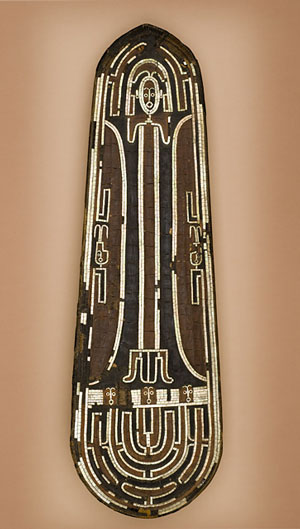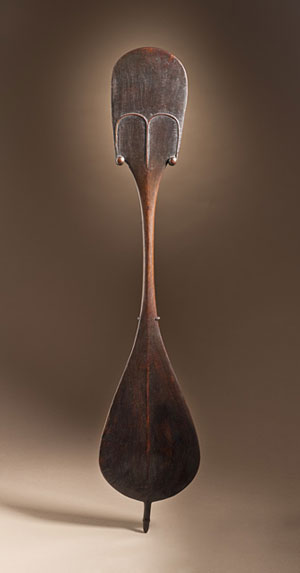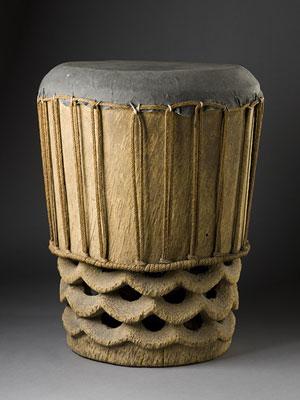At a presentation I attended last month at LACMA, scholars and leading art historians gathered to talk about the museum's new Oceanic art collection and consider different ways to present it. It was a provocative discussion. Christina Hellmich, a curator of New Guinea and Oceanic art at the de Young, presented an interesting point of view. She quoted a Michael Kimmelman review in which he said, "Objects are not static; they are the accumulation of all their meanings."
Representing nearly 1,800 distinct cultures and hundreds of artistic traditions in an area that covers about one-third of the earth's surface, the new Oceanic works of art in LACMA's collection have accumulated multiple stories and layers of meaning before arriving here. Some of the objects were used for ritual and ceremonial purposes and are considered sacred. Many have a distinguished provenance and reflect an era of exploration, such as the eighteenth-century Hawaiian drum collected by Captain James Cook in 1778.

Hawaiian Islands, Drum, circa 1760
Others, like the Solomon Islands ceremonial shield, depict the human form and inspired various modern artists in the late nineteenth and early twentieth centuries.

Solomon Islands, Santa Isabel Island, Ceremonial Shield, circa 1800
And others, like the Rapanui dance paddle with its fluid, curving forms, can simply be appreciated from an aesthetic point of view.

Easter Island, Rapanui Dance Paddle, circa 1800
These multiple layers raise the question: How will these artworks be presented? Jack Flam, president of the Dedalus Foundation, encouraged us to preserve the individuality of each object. To give the objects space and breathing room. To not overemphasize the otherness of the artworks, but instead find commonalities with our own culture and across the museum's collection. This will be a challenging task, but one rich in possibilities.
Since attending the panel, I've been asking myself these questions: A work of art can tell stories about the spirit and identity of people past and present; which stories do we tell? What stories or layers of meaning will visitors bring to these works of art? I can't wait to find out.
Rachel Bernstein, Senior Education Coordinator



